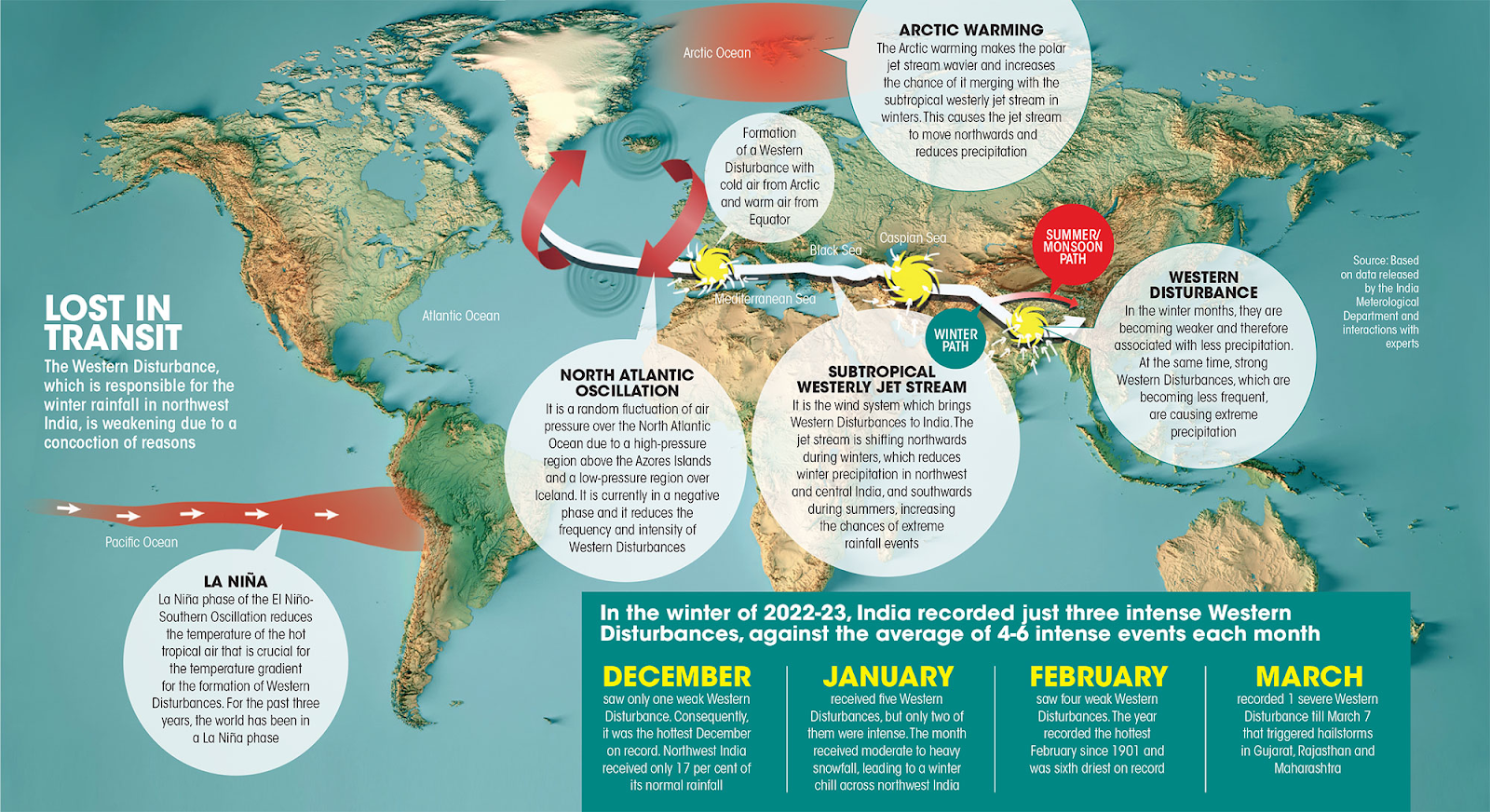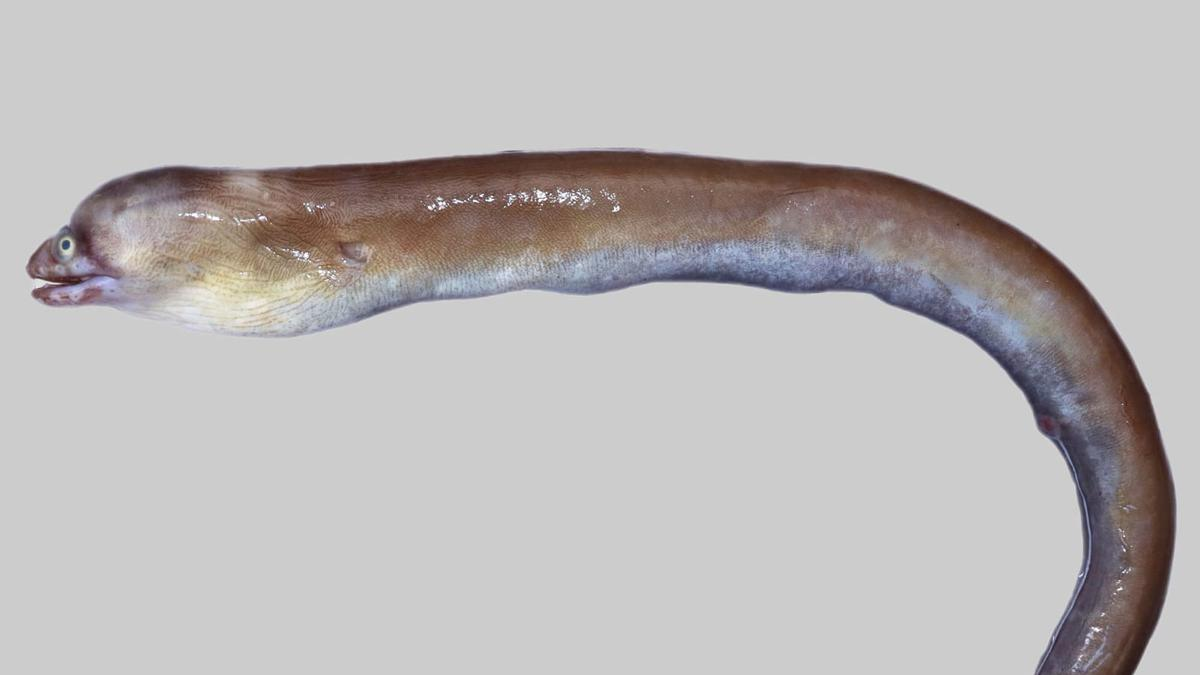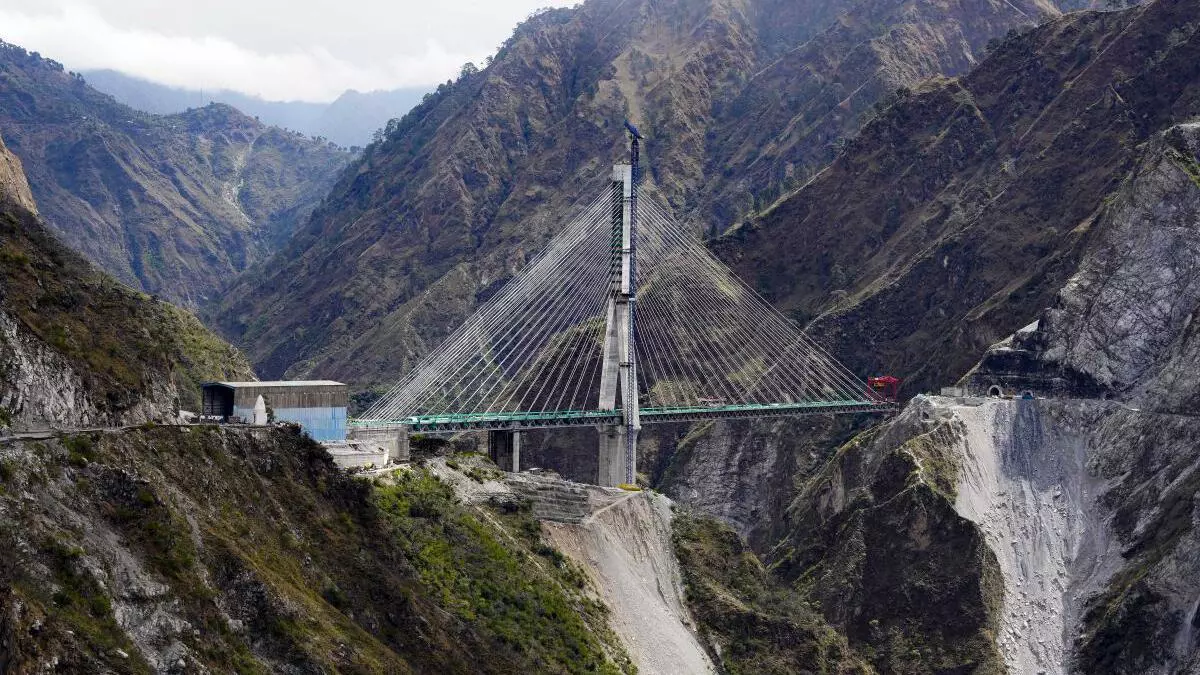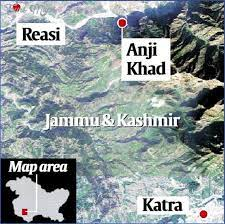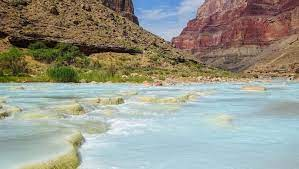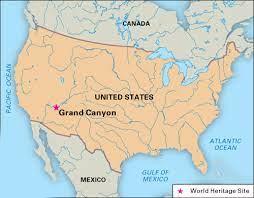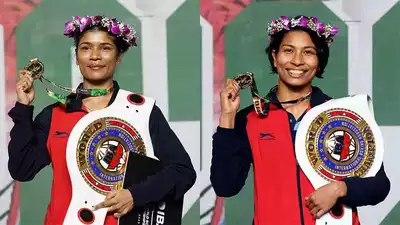Evergreening of Patent
For Prelims: Indian Patent Office, Bedaquiline, Indian Patents Act 1970, Supreme Court.
For mains: Evergreening of Patent.
Why in News?
Recently, the Indian Patent Office rejected U.S. pharmaceutical giant Johnson & Johnson’s (J&J) attempt for Evergreening of Patent on manufacturing of the anti-tuberculosis drug Bedaquiline in India beyond July 2023.
- Bedaquiline is a crucial drug in the treatment of multidrug resistant TB patients for whom the first-line drug treatment — using Isoniazid, Rifampicin, Pyrazinamide and Ethambutol — has stopped working.
Why was the Patent Application Rejected?
- J&J’s patent application was for a fumarate salt of a compound to produce bedaquiline tablets.
- It was argued that J&J’s method to produce a “solid pharmaceutical composition” of bedaquiline doesn’t require an “inventive step”.
- According to the Indian Patent Act 1970 Section 2(1) (ja), an ‘inventive step’ is an invention that is “not obvious to a person skilled in the art”.
- The current application drew significantly from a previous patent, which discussed a similar compound on which bedaquiline is based.
- The Patents Act, 1970 has imposed certain ‘restrictions’ on patentability.
- A patent cannot be granted on ‘mere use of a known process, machine or apparatus unless such known process results in a new product or employs at least one new reactant’.
- Section 3(d) of the Act does not allow ‘evergreening’ of patents to prevent innovator pharma companies from extending the patent beyond the stipulated period of 20 years, to ensure that the monopoly does not extend forever.
- As of now it is still a patented product and there are no generic versions. However, after the expiry of the Bedaquiline patent, the drug makers can make the generic versions per the law.
What is Multi Drug Resistant TB (MDR-TB)?
- MDR-TB is a type of tuberculosis infection caused by bacteria that are resistant to at least two of the most effective first-line drugs for TB treatment, isoniazid and rifampicin.
- MDR-TB is caused by Mycobacterium tuberculosis, the same bacterium that causes regular TB, but is much more difficult to treat.
- MDR-TB develops when the bacteria that cause TB mutate and become resistant to the standard drugs used to treat the disease.
- This can occur when patients with regular TB fail to complete their full course of treatment, leading to incomplete eradication of the bacteria and providing the opportunity for the bacteria to develop resistance to the drugs used.
Why is the Rejection Notable?
- The rejection is expected to lower the cost of bedaquiline by up to 80%.
- India has the largest population of people living with drug-resistant TB. J&J’s patent on bedaquiline meant the drug cost USD 400 (revised to USD 340 in 2020) per person, plus the cost of other drugs.
- So far, the Indian government has directly procured the drug and distributed it through State-level TB programmes. After July 2023, manufacturers of generic drugs in India will be able to produce generic versions of bedaquiline.
What is the Evergreening of Patents?
- About:
- The evergreening of patents is a practice of tweaking drugs in order to extend their patent term and thus their profitability.
- The Indian Patents Act 1970 introduced many provisions to prevent the mischievous practice of “evergreening” of patents.
- This is to aid millions of people who can't afford the expensive modified drugs, as well as the development of the domestic generic drug market.
- Concerns:
- The process does not produce any increase in the therapeutic efficacy of the drug. In many countries, minor reformulations can qualify for patent protection. The result is that it prevents competition in the market and is considered harmful to the market and consumers.
- Companies extend the term of protection and charge more for drugs while defending costs incurred in research and development as no cost has been incurred for such compositions as it is only a minor combination or modification of existing drugs.
- Due to the lack of generic drugs, the variety translates into an increase in the cost of healthcare for consumers.
- The persistence of patents primarily affects consumers in underdeveloped and developing countries who cannot afford the brand name drugs that can save them from deadly diseases.
What is a Related Supreme Court Decision?
- A popular precedent in this regard is Novartis vs Union of India case in which the Supreme Court (SC) rejected an appeal filed by Novartis rejecting the patent and upheld that the beta crystalline form of Imatinib Mesylate was a new form of the known substance i.e., Imatinib Mesylate, wherein the efficacy was well known and rejected the patent.
UPSC Civil Services Examination, Previous Year Question (PYQ)
Prelims
Q. Consider the following statements: (2019)
- According to the Indian Patents Act, a biological process to create a seed can be patented in India.
- In India, there is no Intellectual Property Appellate Board.
- Plant varieties are not eligible to be patented in India.
Which of the statements given above is/are correct?
(a) 1 and 3 only
(b) 2 and 3 only
(c) 3 only
(d) 1, 2 and 3
Ans: (c)
Exp:
- Section 3(J) of Indian Patent Act, excludes from patentability “plants and animals in whole or in any part thereof other than microorganisms, including seeds, varieties, and species, and essentially biological processes for production or propagation of plants and animals”. Hence, statement 1 is not correct.
- The Intellectual Property Appellate Board (IPAB) was constituted in 2003 by the Government of India to hear and resolve the appeals against the decisions of the registrar under the Indian Trademarks Act, 1999 and the Geographical Indications of Goods (Registration and Protection) Act, 1999. Hence, statement 2 is not correct.
- Plant variety protection provides legal protection of a plant variety to a breeder in the form of Plant Breeder’s Rights (PBRs). In India, the Protection of Plant Varieties and Farmers’ Rights (PPVFR) Act, 2001, is a sui generis system that aims to provide for the establishment of an effective system for the protection of plant varieties and the rights of plant breeders and farmers. A sui generis system is an alternative to the patent system. Hence, statement 3 is correct.
- Therefore, option (c) is the correct answer.
Mains
Q. Bringing out the circumstances in 2005 which forced amendment to the section 3(d) in Indian Patent Law, 1970, discuss how it has been utilized by the Supreme Court in its judgement in rejecting Novartis’ patent application for ‘Glivec’. Discuss briefly the pros and cons of the decision. (2013)
IMF Bailouts
For Prelims: IMF, Special Drawing Rights
For Mains: IMF Bailouts - advantages and drawbacks
Why in News?
The International Monetary Fund (IMF) recently confirmed a USD 3 billion bailout plan (under Extended Fund Facility (EFF)) for Sri Lanka’s struggling economy.
- It is also negotiating with Pakistan for a USD 1.1 billion bailout plan on account of its severe economic crisis marked by falling currency and price rise.
What are IMF Bailouts?
- Bailout: Bailout is a general term for extending financial support to a company/country facing a potential bankruptcy threat.
- It can take the form of loans, cash, bonds, or stock purchases.
- A bailout may (not) require reimbursement but is often accompanied by greater oversight and regulations.
- IMF Bailouts: Countries seek help from the IMF usually when their economies face a major macroeconomic risk, mostly currency crisis (such as the ones Sri Lanka is facing).
- Countries seek such assistance from the IMF to meet their external debt and other obligations, to purchase essential imports, and to prop up the exchange value of their currencies.
Note
- A currency crisis is generally a consequence of:
- Gross mismanagement of currency by a nation’s central bank (often pressured by the ruling govt. to create fresh money for populist spending).
- Consequent rapid rise of the overall money supply, which in turn causes rise in prices and drop in exchange value of the currency.
- A currency crisis results in:
- Lack of confidence in said currency
- Disruption of economic activity (people become hesitant to accept the currency in exchange for goods & services)
- Reluctance among foreigners to invest in such an economy.
What is the IMF?
- The IMF is an international organization that promotes global economic growth and financial stability, encourages international trade, and reduces poverty.
- It was set up in 1945 out of the Bretton Woods conference.
- Originally, the primary goal of IMF was to bring about international economic coordination to prevent competing currency devaluation by countries trying to promote their own exports.
- Eventually, it evolved to be a lender of last resort to governments of countries that had to deal with severe currency crises.
- India has sought financial assistance from the IMF seven times but never since 1993. The repayment of all the loans taken from the IMF were completed by May 2000.
How is an IMF Bailout Provided?
- Procedure:
- The IMF lends money to the troubled economies often in the form of Special Drawing Rights (SDRs).
- SDRs simply represent a basket of five currencies, namely the U.S. dollar, the euro, the Chinese yuan, the Japanese yen, and the British pound.
- This lending is carried out by a number of lending programs such as extended credit facility, flexible credit line, stand-by agreements, etc.
- Countries receiving the bailout can use the SDRs for various purposes depending on their individual circumstances.
- The IMF lends money to the troubled economies often in the form of Special Drawing Rights (SDRs).
- Conditions:
- A country may have to agree to implement certain structural reforms as a condition to receive IMF loans.
- Criticism of Lending Conditions:
- Believed to be too tough on the public
- Often accused of being influenced by international politics
- Free-market supporters criticise the IMF for being too interventionist
- Acclamation:
- Conditions are essential for successful lending; it may not make sense for IMF to throw money at a country if its faulty policies that caused the crisis remain untouched.
- Countries with poor institutional functioning and high corruption are most likely to misspend the bailout money.
What are the Impacts of Providing IMF Bailouts?
- Advantages:
- They ensure continued survival of the country under difficult economic circumstances and help solve BoP problems without resorting to measures that can be even more harmful to national/international prosperity.
- A complete collapse of the financial system can be avoided when industries too big to fail start to crumble.
- Insolvency of institutions that are needed for the smooth functioning of the overall markets can be avoided.
- In addition to financial support, the IMF can provide technical assistance and expertise to help a country implement economic reforms and strengthen its institutions.
- Disadvantages:
- IMF’s strict conditions for economic policy reforms may result in reduced govt spending, increased taxes etc. which can be politically unpopular and may lead to social unrest.
- Seeking an IMF bailout may harm a country's reputation in the eyes of investors and lenders, making it more difficult for the country to access international capital markets.
- Repeated IMF bailouts can create a sense of dependency on external funding and discourage countries from implementing necessary long-term reforms to address their economic problems.
- IMF bailouts may be viewed as an admission of economic failure by a govt, which can lead to political instability and even the collapse of the govt.
UPSC Civil Services Examination, Previous Year Questions (PYQ)
Q. "Rapid Financing Instrument" and "Rapid Credit Facility" are related to the provisions of lending by which one of the following? (2022)
(a) Asian Development Bank
(b) International Monetary Fund
(c) United Nations Environment Programme Finance Initiative
(d) World Bank
Ans: (b)
Exp:
Rapid Credit Facility (RCF):
- The Rapid Credit Facility (RCF) provides immediate balance of payments (BoP) requirements to low-income countries (LICs) with no ex-post condition, where a full economic program is neither necessary nor feasible.
- RCF was set up as part of a comprehensive reform to make the fund's financial support more flexible and better suited to suit the diverse needs of LIC including times of crisis.
- There are three areas under the RCF:
- A "regular window" for immediate BoP needs due to a wide range of sources such as household instability, emergencies and fragility.
- For immediate BoP needs due to sudden, exogenous shocks. an “exogenous shock window”.
- A “large natural disaster window” for immediate BoP needs due to natural disasters where the damage is estimated to be equal to or greater than 20% of the member's GD.
- Hence, option (b) is correct.
Changing Western Disturbances
For Prelims: Western Disturbances, Flash floods, Mediterranean region, Caspian Sea, Himalayan glacier, Rabi Crop.
For Mains: Western Disturbances, Significance of Western Disturbances for India.
Why in News?
According to recent studies, the changing character of Western Disturbances might be the primary cause of the abnormal winter seasons in India.
- India has not experienced a normal winter season in the past three years. The second wettest season in the country after the monsoons has remained unusually dry and hot.
How Western Disturbances Affected Winters in India Recently?
- The northwest region of India, which receives almost 30% of its annual rainfall during the winter season, saw an 83% and 76% rainfall deficit in December 2022 and February 2023 respectively.
- The absence of Western Disturbances caused the north Indian plains to experience severe cold waves and cold days in December 2022 and most of January 2023 due to the cold northern winds flowing down from the Himalayas.
- Western Disturbances are also responsible for hailstorms that damage standing crops, fog events that interrupt air, rail and road services and cloud bursts that result in flash floods.
What are Western Disturbances?
- About:
- Western Disturbances are a series of cyclonic storms that originate in the Mediterranean region, travel over 9,000 km to bring winter rains to northwest India.
- A Western Disturbance collects moisture from the Mediterranean Sea, Black Sea, and Caspian Sea and traverses over Iran and Afghanistan before hitting the western Himalayas.
- While the storm systems occur throughout the year, they travel to India mostly between December and April because the trajectory of the subtropical westerly jet stream, which transports them, shifts during the winter months to the rim of the Himalayas.
- For the rest of the year, the jet stream travels from above the Himalayas to the Tibetan Plateau and China. Its trajectory changes as per the position of the Sun.
- Western Disturbances are a series of cyclonic storms that originate in the Mediterranean region, travel over 9,000 km to bring winter rains to northwest India.
- Significance for India:
- Western Disturbances are the primary source of snowfall that replenishes the Himalayan glaciers during winter.
- These glaciers feed major Himalayan rivers like the Ganga, Indus and Yamuna as well as myriad mountain springs and rivulets.
- These low-pressure storm systems help farmers in India grow their rabi crop.
- Western Disturbances are the primary source of snowfall that replenishes the Himalayan glaciers during winter.
- Issues:
- The Western Disturbances are not always the harbingers of good weather. Sometimes WDs can cause extreme weather events like floods, flash floods, landslides, dust storms, hail storms and cold waves, destroying infrastructure and impacting life and livelihoods.
How Western Disturbances are Affected by Other Climatic Phenomena?
- La Nina Event:
- For the past three years, the world has been in a La Niña phase, which refers to the cooling of ocean surface temperature in the Pacific Ocean.
- It weakens the temperature gradient for the formation of Western Disturbances as it reduces the temperature of the hot tropical air.
- For the past three years, the world has been in a La Niña phase, which refers to the cooling of ocean surface temperature in the Pacific Ocean.
- North Atlantic Oscillation:
- Western Disturbances are also influenced by the North Atlantic Oscillation, a random fluctuation of air pressure over the North Atlantic Ocean due to a high-pressure region above the Azores Islands in the central North Atlantic and a low-pressure region over Iceland.
- Due to this, the weather system is currently in a negative phase, as both low- and high-pressure systems are weak, and it makes Western Disturbances 20% less frequent and 7% less intense than a positive phase.
- Western Disturbances are also influenced by the North Atlantic Oscillation, a random fluctuation of air pressure over the North Atlantic Ocean due to a high-pressure region above the Azores Islands in the central North Atlantic and a low-pressure region over Iceland.
- Subtropical Jet Stream:
- The northward shift of the subtropical westerly jet stream not only reduces the chance of Western Disturbances striking India but also increases the chance of them affecting higher latitudes such as the Tibetan Plateau or even as far up as China and Russia.
- This could indirectly affect the southwest monsoon, which accounts for 80% of India’s annual rainfall.
- The northward shift of the subtropical westerly jet stream not only reduces the chance of Western Disturbances striking India but also increases the chance of them affecting higher latitudes such as the Tibetan Plateau or even as far up as China and Russia.
- Interaction with Southwest Monsoon:
- The warming of the Arctic region makes the polar front jet wavier, causing Western Disturbances to visit India more frequently during summers.
- Western Disturbances during summer, monsoon, and post-monsoon periods increase the chances of them interacting with the southwest monsoon and other associated local convection systems such as tropical depressions that travel northward from either the Bay of Bengal or the Arabian Sea.
- Such interactions can cause catastrophic weather disasters.
- For instance, In May 2021, a remnant of the extremely severe cyclone Tauktae, which made landfall along the Gujarat coast, travelled all the way to Delhi and interacted with a Western Disturbance to cause heavy rainfall in Delhi and its vicinity.
UPSC Civil Services Examination, Previous Year Questions (PYQ)
Q. Consider the following statements: (2009)
- In the world, the tropical deserts occur along the western margins of continents within the trade wind belt.
- In India, the East Himalayan region gets high rainfall from north-east winds.
Which of the statements given above is/are correct?
(a) 1 only
(b) 2 only
(c) Both 1 and 2
(d) Neither 1 nor 2
Ans: (a)
Global Hub for Green Ship Building by 2030
For Prelims: Green Tug Transition Programme, UN's Sustainable Development Goal, Paris Agreement, PM Gati Shakti, International Maritime Organisation (IMO)
For Mains: India’s Initiatives Related to Shipbuilding Sector.
Why in News?
The Union Minister of Ports, Shipping & Waterways, has announced India's plan to become a global hub for green ship building by 2030 with the launch of the Green Tug Transition Programme.
- This initiative aims to reduce emissions and move towards sustainable development.
What are India's Initiatives Related to the Shipping Sector?
- National Centre of Excellence in Green Port & Shipping (NoCEGPS):
- India’s first NoCEGPS is a collaboration between the Ministry of Ports, Shipping & Waterways (MoPSW) and the Energy and Resources Institute. It is in Gurugram, Haryana.
- The centre is aimed at playing a crucial role in achieving the UN's Sustainable Development Goal (14) to sustainably manage and protect marine and coastal ecosystems from pollution, conservation, and sustainable use of ocean-based resources.
- The centre will develop the regulatory framework and alternative technology adoption roadmap for green shipping in India, meeting the obligations under the Paris Agreement.
- NCoEGPS will act as a technological arm of MoPSW for providing the needed support on Policy, Research and Cooperation on Green Shipping areas for Ports, DG Shipping, CSL and other institutions under the umbrella of MoPSW.
- India’s first NoCEGPS is a collaboration between the Ministry of Ports, Shipping & Waterways (MoPSW) and the Energy and Resources Institute. It is in Gurugram, Haryana.
- Green Tug Transition Programme:
- The Green Tug Transition Programme will start with 'Green Hybrid Tugs' powered by Green Hybrid Propulsion systems and subsequently adopting non-fossil fuel solutions like Methanol, Ammonia, and Hydrogen.
- The target is to have the initial Green Tugs working in all major ports by 2025, and 50% of all Tugs converted into Green Tugs by 2030.
- The Green Tug Transition Programme will start with 'Green Hybrid Tugs' powered by Green Hybrid Propulsion systems and subsequently adopting non-fossil fuel solutions like Methanol, Ammonia, and Hydrogen.
- PM Gati Shakti:
- The development of green logistics supply chains in the country has already accelerated through the PM Gati Shakti - National Master Plan for Multi-Modal Connectivity along with the Green Ports initiative.
- The ports aim to reduce carbon emissions per ton of cargo handled by 30% by 2030.
- The development of green logistics supply chains in the country has already accelerated through the PM Gati Shakti - National Master Plan for Multi-Modal Connectivity along with the Green Ports initiative.
- The Green Voyage 2050 Project:
- It is a partnership project between the Government of Norway and International Maritime Organisation (IMO) launched in May 2019 aiming to transform the shipping industry towards a lower carbon future.
Conclusion
India's aim to become a global hub for green shipbuilding by 2030 is a major endeavour towards a cleaner, greener environment. These initiatives will accelerate India's development of green logistics supply chains and reduce carbon emissions, achieving sustainable development.
UPSC Civil Services Examination, Previous Year Question (PYQ)
Q. With reference to ‘Indian Ocean Rim Association for Regional Cooperation (IOR-ARC)’, consider the following statements: (2015)
- It was established very recently in response to incidents of piracy and accidents of oil spills.
- It is an alliance meant for maritime security only.
Which of the statements given above is/are correct?
(a) 1 only
(b) 2 only
(c) Both 1 and 2
(d) Neither 1 nor 2
Ans: (d)
Exp:
- Indian Ocean Rim Association for RegionalCooperation (IOR-ARC) is a regional cooperation initiative of the Indian Ocean Rim countries which was established in Mauritius in March, 1997 with the aim of promoting economic and technical cooperation among its members. Hence, statement 1 is not correct.
- IOR-ARC is the only pan-Indian ocean grouping. It has 23 Member States and 9 Dialogue Partners.
- It aims to create a platform for trade, socio-economic and cultural cooperation in the Indian Ocean Rim area, which constitutes a population of about two billion people. Hence, statement 2 is not correct.
- The Indian Ocean Rim is rich in strategic and precious minerals, metals and other natural resources, marine resources and energy, all of which can be sourcedfrom Exclusive Economic Zones (EEZ), continental shelves and the deep seabed.
- Therefore, option D is the correct answer.
Rabies
Why in News?
Recently, the Ministry of Health and Family Welfare has launched the National Rabies Control Programme (NRCP) for prevention and control of Rabies.
What are the Objectives of NRCP?
- Provision of rabies vaccine & rabies immunoglobulin through national free drug initiatives;
- Training on appropriate animal bite management, prevention and control of rabies, surveillance and intersectoral coordination;
- Strengthening surveillance of animal bites and rabies deaths reporting;
- Creating awareness about rabies prevention.
What is Rabies?
- About:
- Rabies is a vaccine-preventable, zoonotic, viral disease.
- It is caused by a Ribonucleic Acid (RNA) virus that is present in the saliva of a rabid animal (dog, cat, monkey, etc).
- It is invariably transmitted following a bite of an infected animal that leads to deposition of the saliva and the virus in the wound.
- Once clinical symptoms appear, rabies is virtually 100% fatal. The death invariably occurs in four days to two weeks due to cardio-respiratory failure.
- In up to 99% of cases, domestic dogs are responsible for rabies virus transmission to humans.
- The incubation period varies from 2–3 months but may vary from 1 week to 1 year, or rarely even more.
- Treatment:
- Rabies can be prevented by vaccinating pets, staying away from wildlife, and seeking medical care after potential exposures before symptoms start.
- Symptoms:
- The first symptoms of rabies may be similar to flu and may last for a few days, which includes:
- Fever, Headache, Nausea, Vomiting, Anxiety, Confusion, Hyperactivity, Difficulty swallowing, Excessive salivation, Hallucinations, Insomnia.
- The first symptoms of rabies may be similar to flu and may last for a few days, which includes:
What is the Status of Rabies in India?
- India is endemic for rabies, and accounts for 36% of the world’s rabies deaths.
- It causes 18 000-20 000 deaths every year. About 30-60% of reported rabies cases and deaths in India occur in children under the age of 15 years as bites that occur in children often go unrecognized and unreported.
- In India, dogs are responsible for about 97% of human rabies, followed by cats (2%), jackals, mongooses and others (1%). The disease is endemic throughout the country.
What are the Initiatives to Deal with Rabies?
- The Central Government has framed the Animal Birth Control (Dogs) Rules, 2023 which is to be implemented by the local authority to control the population of stray dogs. The main focus of the rules is on anti-rabies vaccination of stray dogs and neutering of stray dogs as means of population stabilization.
- The Government has launched ‘National Action Plan For Dog Mediated Rabies Elimination (NAPRE) from India by 2030’. The stray dog population control and management of stray dogs is the mandate of the local bodies.
Rare Planetary Alignment
Why in News?
Five planets - Mercury, Venus, Mars, Jupiter, and Uranus will align in the sky which is often called a planetary parade or alignment, and will be visible to the naked eye.
What are the Major Points Related to Planetary Alignment?
- About:
- The best viewing time is on March 28th 2023, shortly after the sun sets below the horizon.
- Venus will be the most visible planet, followed by Mars with its special orange hue.
- Uranus will be near Venus but difficult to detect without proper equipment, while Mercury and Jupiter will appear at the bottom.
- The last time these five planets aligned was in 2004. The alignment is often referred to as a planetary parade and can be seen in the nighttime sky.
- Factors Affecting Observability:
- Experts have pointed out that the visibility of certain planets in the alignment depends on certain conditions, such as light pollution and the location of the viewer.
- Recent Planetary Alignments:
- A similar alignment occurred in June 2022, where five planets - Mercury, Venus, Mars, Jupiter, and Saturn - aligned.
- However, this lineup will not occur again until 2040.
- A similar alignment occurred in June 2022, where five planets - Mercury, Venus, Mars, Jupiter, and Saturn - aligned.
What is Light Pollution?
- About:
- Light pollution is the excessive use of artificial light that brightens the night sky and disrupts the natural darkness.
- This affects the observability of celestial bodies.
- Other Impacts:
- Disrupts Wildlife and Ecosystems: Artificial light can interfere with the natural behaviours and migration patterns of animals, birds, and insects.
- Health Problems: Exposure to artificial light at night can disrupt the human circadian rhythm, leading to sleep disorders, fatigue, and other health problems.
- Economic Costs: Light pollution wastes energy, leading to higher electricity bills and unnecessary carbon emissions.
UPSC Civil Services Examination, Previous Year Question (PYQ)
Q. On 21st June, the Sun (2019)
(a) does not set below the horizon at the Arctic Circle
(b) does not set below the horizon at Antarctic Circle
(c) shines vertically overhead at noon on the Equator
(d) shines vertically overhead at the Tropic of Capricorn
Ans: (a)
World Athletics Bans Transgender Women
Why in News?
World Athletics, the governing body for athletics, has announced a ban on transgender women from competing in elite female competitions if they have gone through male puberty.
- The council has also imposed stricter regulations on athletes with Differences in Sex Development (DSD) by reducing the maximum amount of plasma testosterone for athletes in half, from 5 to 2.5 nanomoles per litre.
What are the Major Points Related to the Ban?
- According to World Athletics, the ban on transgender women competing in elite female competitions is based on the need to protect the female category.
- The tighter rules will impact DSD athletes such as Caster Semenya, Christine Mboma, and Francine Niyonsaba.
- At the 2020 Olympics, Semenya and Niyonsaba were both barred from the 800m race and turned their attention to the 5,000m, while Mboma won silver in the 200m.
- Swimming's world governing body, World Aquatics, has also banned transgender women from elite competition if they have experienced any part of male puberty.
What is DSD?
- It is a condition in which an individual's physical sex characteristics do not align with typical male or female development.
- This can include various genetic, hormonal, or anatomical differences, leading to conditions such as intersex or ambiguous genitalia.
- In the context of athletics, DSD athletes may have naturally high levels of testosterone, which has been a subject of controversy and regulation in sports.
- For instance, DSD athletes have male testes but do not produce enough of the hormone Dihydrotestosterone (DHT) that is necessary for the formation of male external genitalia.
New Species of Moray Eel
Why in News?
Researchers have recently discovered a new species of Moray eel off the Cuddalore coast (Tamil Nadu) and has been named after the state as Gymnothorax tamilnaduensis.
What are the Key Highlights of Discovery?
- This is the first ever record of this genus, Gymnothorax, collected through an exploration survey conducted along the coastal waters of Cuddalore.
- 4 specimens (total length 272-487 mm) were collected, and the species is notably different from other species of the genus Gymnothorax.
- The distinction point is a series of lines of small dark spots present on the head and a single line of black spots on the midline of the body.
- The name of the species has been registered in ZooBank, the online registration system for the International Commission on Zoological Nomenclature (ICZN).
What are the Key Points about Moray Eel?
- Moray Eels occur in all tropical and subtropical seas, they live in shallow water among reefs and rocks.
- They are known for two types of jaws: one is regular (oral) jaws with big teeth and the second jaw is called the pharyngeal jaw (which drags prey inside the eels stomach).
- Their IUCN red list status is Least Concern (LC).
- Including the newly discovered species, 29 species of Gymnothorax have been documented in Indian waters so far.
International Commission on Zoological Nomenclature
- Founded in 1895, ICZN is tasked to create, publish and periodically revise the International Code of Zoological Nomenclature.
- It provides and regulates a uniform system of zoological nomenclature ensuring that every animal has a unique and universally accepted scientific name.
- ICZN acts as adviser and arbiter for the zoological community by generating and disseminating information on the correct use of the scientific names of animals.
Rapid Fire Current Affairs
State of School Feeding Worldwide 2022
According to the World Food Programme’s (WFP) report the State of School Feeding Worldwide 2022, the number of children fed by school meals has fallen by approximately 4% in low-income countries, with the most significant declines observed in Africa. The analysis is based on a sample of 176 countries, up from 163 countries in 2020.
As per the study, high-income, upper-middle-income and lower-middle-income countries showed a consistent, modest increase of 4%, 4% and 12%, respectively. It highlighted the need for external development partners to target support in low-income countries particularly.
Despite other post-pandemic demands and cash constraints, low-income countries have increased their domestic funding for school meals from 30% in 2020 to 45% in 2022.
Of the 30 million increases in the number of children receiving school meals between 2020 and 2022, the five countries: Brazil, Russia, India, China and South Africa accounted for 19 million of the increase in the number of children fed.
Read More: World Food Programme’s (WFP), School Feeding Programme
First Cable-Stayed Railway Bridge of India
The first cable-stayed railway bridge of India on the Anji river (a tributary of the Chenab River) in Jammu and Kashmir is expected to be ready by May 2023.
Anji bridge between Katra and Reasi stations falls in the Reasi district of the Union Territory of Jammu and Kashmir. The upcoming structure is part of the ambitious Udhampur-Srinagar-Baramulla-Rail Link (USBRL) project. The project was declared a National Importance Project in March 2002. It is also the biggest mountain railway project since independence.
The bridge will also have an integrated monitoring system with numerous sensors installed at various locations.
Read More: Jammu & Kashmir
Sacred Hopi Site in Arizona
A site located in Arizona, United States and sacred to the Hopi Native American Nation has been awarded a ‘Water and Heritage Shield’ by the International Committee on Monuments and Sites International Science Committee (ICOMOS ISC). The Shield was awarded to the Black Mesa Trust (BMT), a Hopi grassroots organisation.
The purpose of the Shield is to help the public become aware of the significance of water and indigenous sacred sites all over the world and the right to cultural and historical memory.
The Hopi have been known for their unique reverence to the environment. The Hopi consider the Sípaapu to be the place from where their ancestors emerged from another world into this one.
The Sípaapu is a rocky dome made of limestone as well as a spring located on the Little Colorado river, a tributary of Colorado. Little Colorado joins the main stem of the river within the Grand Canyon, a UNESCO World Heritage Site.
ICOMOS ISC is a non-governmental international organisation dedicated to the conservation of the world’s monuments and sites. It helps the United Nations to recognise heritage globally.
Read More: International Committee On Monuments and Sites (ICOMOS)
Women’s World Boxing Championship
Recently, Nikhat Zareen (2nd world title) and Lovlina Borgohain (1st world title) won two gold medals for India in the Women’s World Boxing Championship.
The Women's World Boxing Championship was organised by the International Boxing Association (IBA). The mission of IBA is to promote, support and govern the sport of boxing worldwide in accordance with the requirements and spirit of the Olympic Charter.
The Olympic Charter is the codification of the fundamental principles of Olympism, and the rules and bye-laws (a set of rules or laws established by an organization or community so as to regulate itself) adopted by the International Olympic Committee.
Read More: Women’s World Boxing Championship


